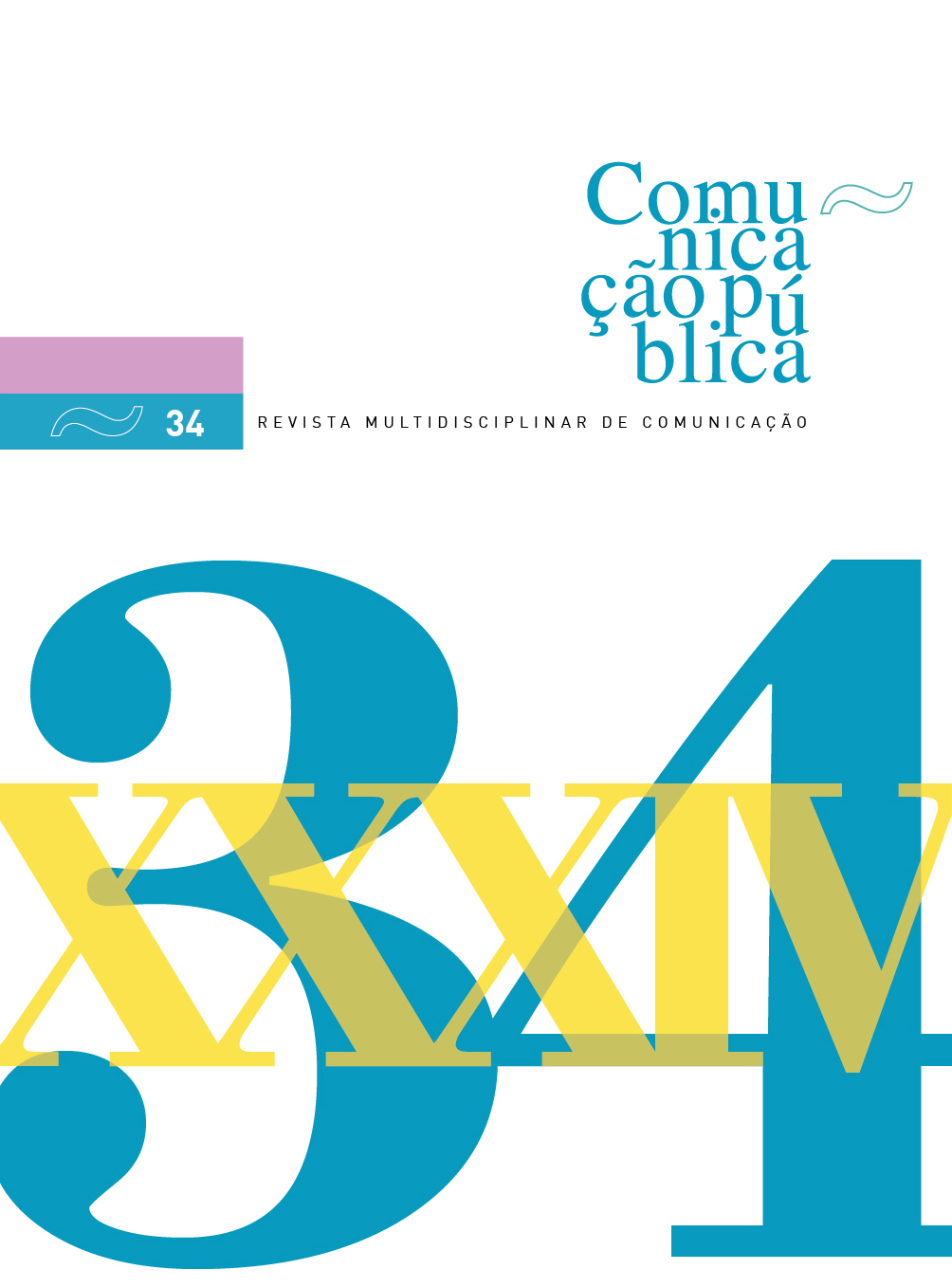A receção da sitcom televisiva Friends em Portugal
uma análise comparativa das Gerações X, Y e Z
DOI:
https://doi.org/10.34629/cpublica.743Palavras-chave:
recepção audiovisual, entretenimento, ficção televisiva, sitcom, FriendsResumo
O objetivo deste artigo consiste em analisar a receção da sitcom televisiva americana Friends em Portugal, comparando as Gerações X, Y e Z. A análise centra-se nas diferenças geracionais na receção e nas gratificações adquiridas relativamente a uma sitcom que alcançou uma influência e uma longevidade que vai muito para além das suas dez temporadas. Adotando uma abordagem quantitativa, os dados foram recolhidos através de um inquérito, com uma amostra de 608 inquiridos das Gerações X, Y e Z. Foi possível analisar as diferenças na forma como as três gerações dão sentido a este conteúdo mediático, confirmando que buscam gratificações distintas e desenvolvem diferentes conexões de identificação e empatia com os personagens. Os resultados mostram, assim, o impacto de uma sitcom originalmente produzida há mais de vinte anos, que não apenas transcende gerações, mas também as impacta de forma diferente.
Downloads
Referências
Alasuutari, P. (1996). Television as a Moral Issue. In P. L. Crawford & S. B. Hafsteinsson (Eds.), The construction of the viewer: Media ethnography and the anthropology of audiences (pp. 101-117). Intervention Press.
Allen, R. (1980). Functionalism and use and gratifications: A comparison and contrast. Delaware.
Austerlitz, S. (2019). Generation Friends. Dutton.
Doherty, C., Kiley, J., Tyson, A., & Jameson, B. (2015, September). The whys and hows of generations research. Pew Research Center, 17.
Dou, W., Wang, G., & Zhou, N. (2006). Generational and regional differences in media consumption patterns of Chinese generation x consumers. Journal of Advertising, 35(2), 101-110. https://doi.org/10.1080/00913367.2006.10639230.
Fedele, M. (2011). El consum adolescent de la ficció seriada televisiva (p. 254). Universitat Autònoma de Barcelona. http://www.tdx.cat/handle/10803/83502
Grandío, M. (2009). El entretenimiento televisivo. Un estudio de audiencia desde la noción de gusto. Comunicación y Sociedad, 22(2), 139-158.
Hargrave, A. M., & Gatfield, L. (2002). Soap box or soft soap? Audience attitudes to the British soap opera. Broadcasting Standards Comission.
Haridakis, P., & Hanson, G. (2009). Social interaction and co-viewing with YouTube: Blending mass communication reception and social connection. Journal of Broadcasting and Electronic Media, 53(2), 317-335. https://doi.org/10.1080/08838150902908270.
Herzog, H. (1941). On Borrowed Experience. An Analysis of Listening to Daytime Sketches. Studies in Philosophy and Social Science, 9(1), 65-95.
Inglehart, R. (1977). The silent revolution – Changing values and political styles among western publics. Princeton University Press.
Jiménez, A. G., López, M. C., & Pisionero, C. G. (2012). A vision of uses and gratifications applied to the study of internet use by adolescents. Communication and Society, 25(2), 231-254. https://doi.org/10.15581/003.25.36168.
Knobloch-Westerwick, S., Westerwick, A., & Sude, D. J. (2019). Media choice and selective exposure. In M. B. Oliver, A. A. Raney, & J. Bryant (Eds.), Media effects: Advances in theory and research (4th Ed.). Routledge. https://doi.org/10.4324/9780429491146.
Knox, S., & Schwind, K. H. (2019). Friends: A reading of the sitcom. Palgrave Macmillan.
Kutulas, J. (2018). Anatomy of a hit: Friends and its sitcom legacies. Journal of Popular Culture, 0(0), 1-18. https://doi.org/10.1111/jpcu.12715.
Lacalle, C. (2015). Young people and television fiction. Reception analysis. Communications, 40(2), 237-255. https://doi.org/10.1515/commun-2015-0006.
Lazarsfeld, P. F., & Merton, R. K. (1948). Mass communication, popular taste and organized social action. Media studies: A reader (2nd Ed., pp. 18-30). Edinburgh University Press, 1999.
Livingstone, S. (1988). Why people watch soap opera: An analysis of the explanations of British viewers. European Journal of Communication, 3, 55-80.
Livingstone, S. (2004). Media audiences: Effects, users, institutions, and power. Sage.
McQuail, D., & Deuze, M. (2020). McQuail’s media and mass communication theory. Sage.
Rubin, A. (2009). Uses and gratifications perspective on media effects. In J. Bryant, & M. B. Oliver (Eds.), Media effects: Advances in theory and research (3rd ed., pp. 533-547). Routledge. https://doi.org/10.4324/9780203877111-14.
Ruggiero, T. E. (2000, February). Uses and gratifications theory in the 21st Century. In R. Wei (Ed.), Refining Milestone Mass Communications Theories for the 21st Century, 36-70. https://doi.org/10.4324/9781315679402-4.
Sandell, J. (1998). The personal is professional on TV. I’ll be there for you: Friends and the fantasy of alternative families. American Studies, 39(2), 141-155.
Smith, M. (2022). Engaging characters: Fiction, emotion, and the cinema. Oxford University Press.
Tefertiller, A., & Sheehan, K. (2019). TV in the streaming age: Motivations, behaviors, and satisfaction of post-network television. Journal of Broadcasting and Electronic Media, 63(4), 595-616. https://doi.org/10.1080/08838151.2019.1698233.
Todd, A. M. (2011). Saying goodbye to Friends: Fan culture as lived experience. Journal of Popular Culture, 44(4), 854-871. https://doi.org/10.1111/j.1540-5931.2011.00866.x.
Zsila, Á., Orosz, G., Demetrovics, Z., & Urbán, R. (2020). Motives for viewing animated sitcoms and their associations with humor styles, positivity, and self-criticism in a sample of Hungarian viewers. Plos One, 15(3), 1-18. https://doi.org/10.1371/journal.pone.0230474.
Downloads
Publicado
Edição
Secção
Licença
Direitos de Autor (c) 2023 Copyright (c) 2023 Author

Este trabalho encontra-se publicado com a Licença Internacional Creative Commons Atribuição-NãoComercial 4.0.
Os conteúdos da Comunicação Pública estão licenciados com uma licença Creative Commons - Atribuição-NãoComercial 4.0 Internacional.




